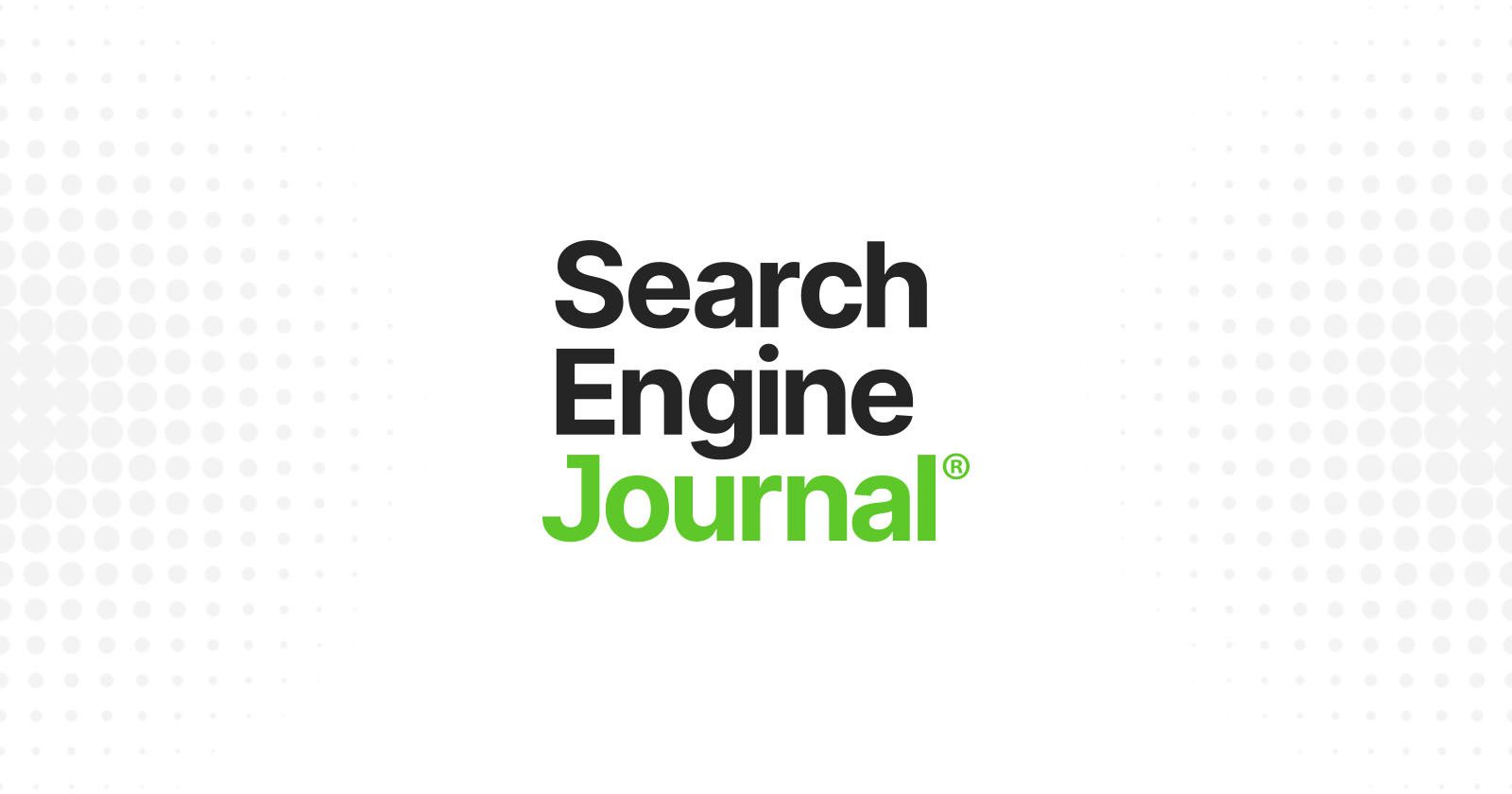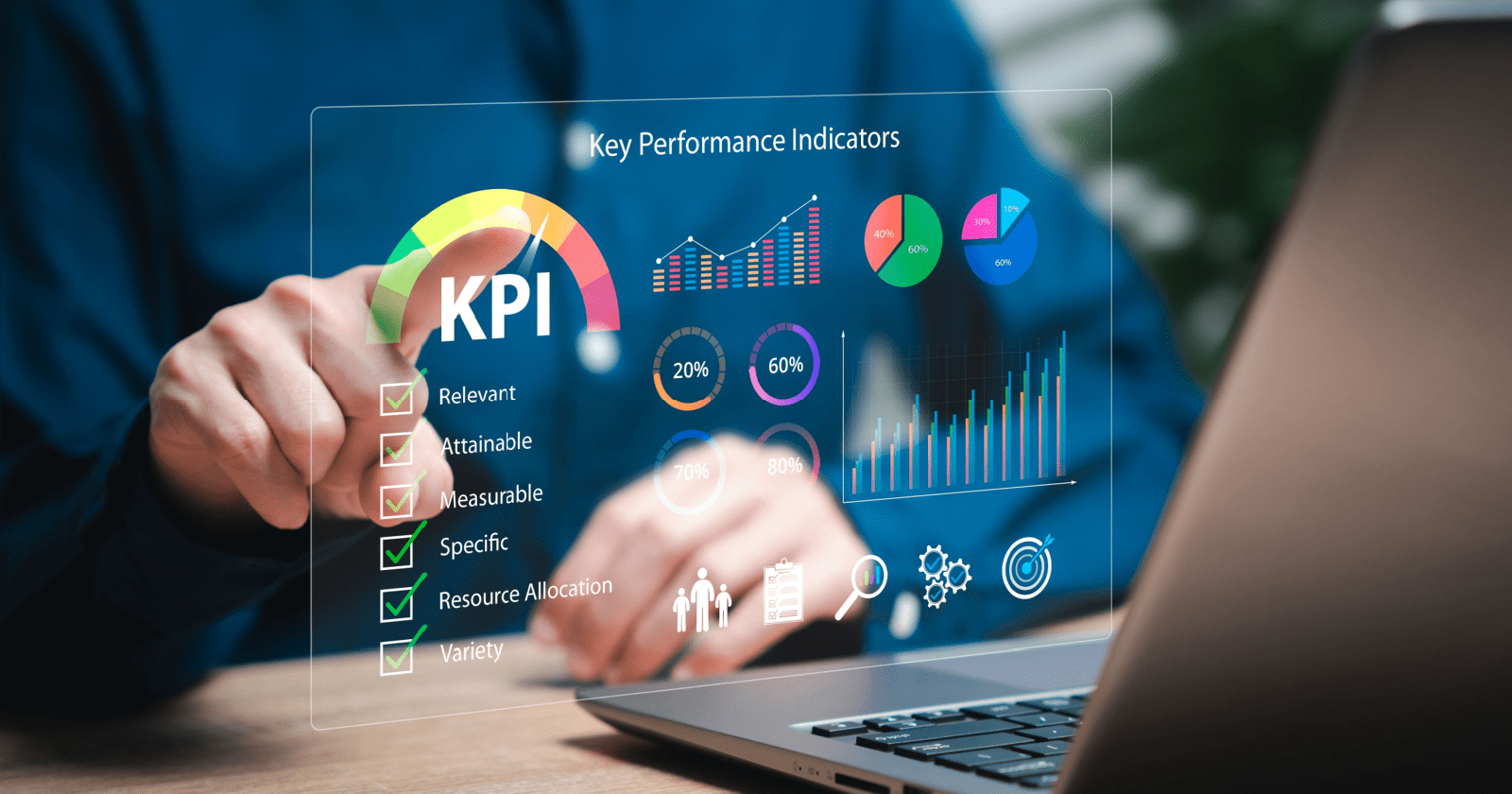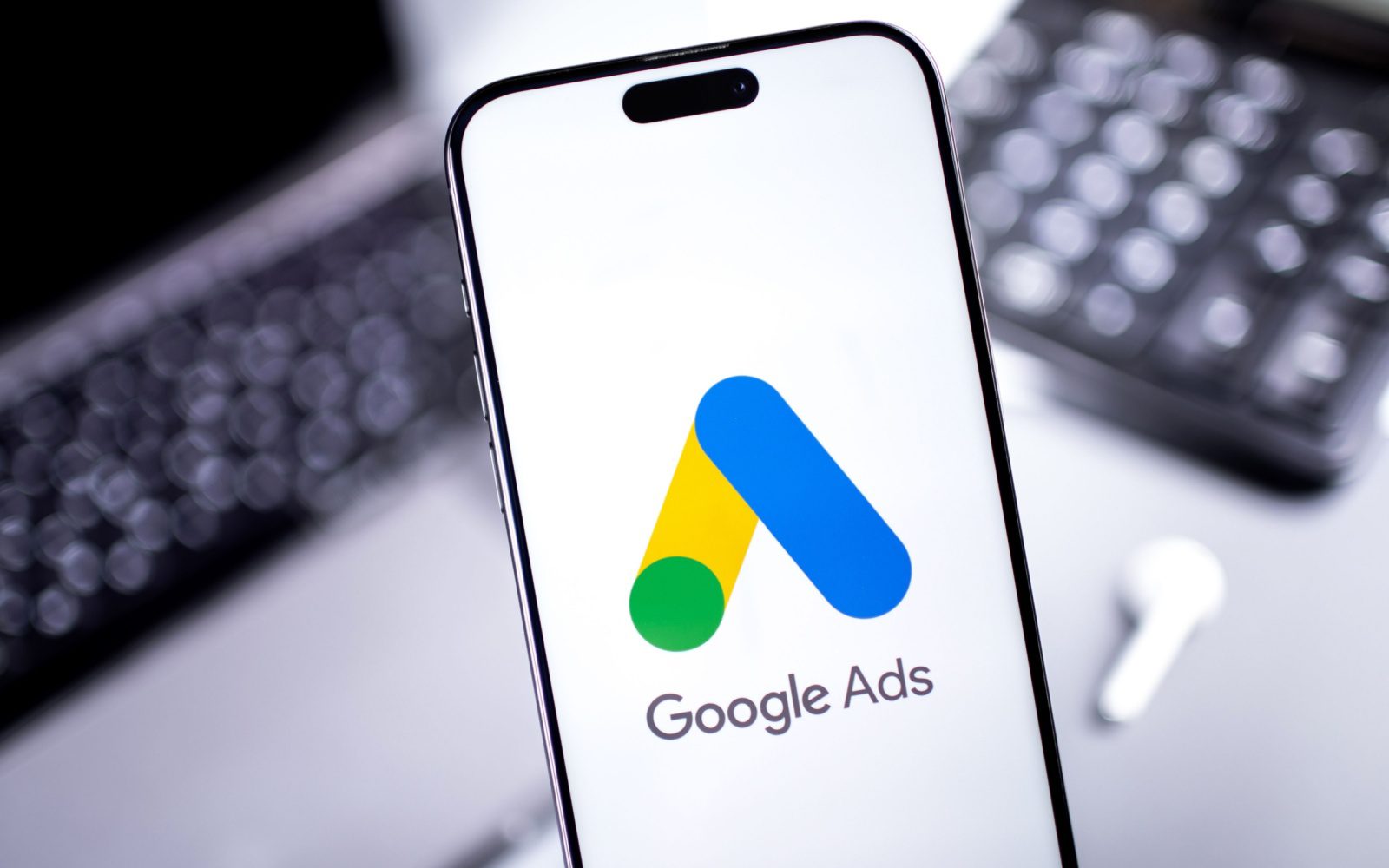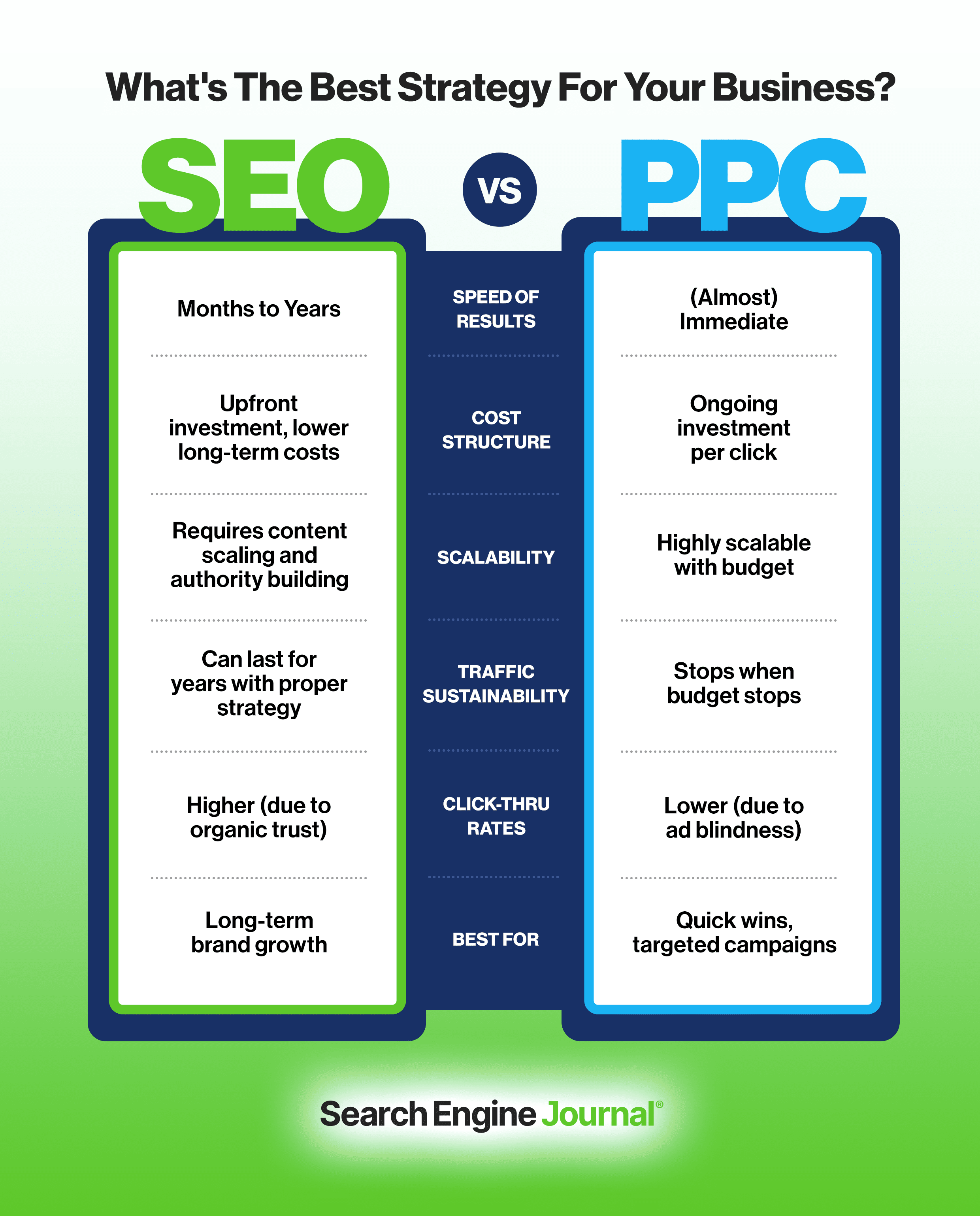If you’re still measuring your PPC success based on click-through rate and impressions alone, you’re about to be left behind.
The role of paid media has changed – and not just because Google Ads released another round of automation.
It’s changing because people have changed. We live in a multi-device, privacy-first, AI-influenced world where attention spans are shorter, conversion paths are messier, and attribution is murkier than ever.
And yet, many advertisers still optimize like it’s 2015 – staring at dashboards full of click-through-rate, cost-per-click, and average positions like they’re the final word.
Here’s the uncomfortable truth: PPC has never been just about getting someone to click. It’s about driving real, measurable business outcomes – profitable, incremental, sustainable outcomes – even when the platforms don’t make it easy.
This article isn’t another “PPC KPI listicle” telling you to improve your CTR or lower your CPC. We’re going deeper.
The KPIs below are the ones that actually move the needle today, the ones you need in your toolbox if you want to keep your budget, secure executive buy-in, and prove paid media’s value without hiding behind vanity metrics.
1. Profit (Not Just ROAS)
Return on ad spend (ROAS) has long been the default north star in PPC reporting, but frankly, it’s overdue for a demotion.
On its own, ROAS offers a dangerously incomplete picture. It tells you how much revenue was generated for every dollar spent – but revenue isn’t profit.
A campaign might boast a stellar 600% ROAS, but if fulfillment costs, discounts, or shipping fees gobble up 70% of that revenue, what are you really left with?
On the other hand, a modest-looking 300% ROAS campaign could quietly be generating double the profit if it’s driving high-margin sales.
Today’s best-in-class PPC teams know this and build profit measurement directly into their strategy.
They’re calculating contribution margins at the product level and adjusting revenue numbers accordingly before feeding that data back into Google Ads or Microsoft Ads.
This lets algorithms optimize toward profit – not just revenue – giving teams a competitive edge over advertisers still stuck reporting on inflated ROAS figures.
When you can walk into a CMO’s office and confidently show not just “here’s what we sold,” but “here’s what we made,” you earn a different kind of respect.
2. Incrementality (The “Would You Have Gotten This Anyway?” Metric)
This is the key performance indicator (KPI) that separates marketers who report from those who understand.
Incrementality forces you to ask: Did this sale happen because of PPC, or would it have happened anyway?
In the old days, you might have taken every conversion at face value, especially if it showed up as the last click.
Today, with attribution becoming less precise and users bouncing between channels, platforms, and devices, you can’t afford to make that assumption.
Incrementality gets to the heart of what you’re actually contributing to the business. It’s about quantifying the lift your campaigns generate beyond what would have happened without paid media.
Whether through holdout tests, geo-based experiments, or platform-led lift studies, advertisers investing in incrementality measurement consistently find out that some campaigns – often brand and remarketing – are less impactful than they seem.
Sure, measuring incrementality is messy. It doesn’t fit neatly into Google’s default reporting.
However, CMOs don’t want to see PPC taking credit for revenue that would’ve closed regardless. They want to know what’s working because of paid media, not just what’s being tagged by it.
Advertisers who commit to measuring incrementality make better budgeting decisions and protect themselves from over-investing in campaigns that are just skimming the top.
3. Customer Lifetime Value (CLV Or LTV)
There’s no excuse for ignoring Lifetime Value (LTV) today.
Rising acquisition costs and shorter attribution windows have made short-term metrics like first-purchase cost-per-acquisition (CPA) less useful. The most valuable PPC programs today optimize for the long game.
Customer Lifetime Value is about understanding the total value a customer brings to the business, not just their first purchase.
For SaaS, subscription commerce, and many DTC businesses, the initial conversion is merely the opening act. If you’re optimizing toward cheap CPAs but acquiring low-value, one-and-done customers, you’re actively hurting long-term profitability.
Advanced teams are feeding LTV data directly into Google Ads through offline conversion imports, enabling smart bidding strategies to optimize for customers likely to return and spend again.
Others are building LTV models internally and using them to guide targeting, creative, and bidding strategies manually.
This shift is more than tactical – it’s strategic. Businesses optimizing for LTV don’t just get more customers; they get better customers. Customers who stay, spend more, and fuel real growth.
4. Cost Per Incremental Acquisition (CPIA)
While CPA still has its place, the real game is CPIA – Cost Per Incremental Acquisition.
CPIA zooms out and asks: What did it cost to acquire net-new, incremental customers – the ones who wouldn’t have converted without this campaign?
This is a much harder question than simply “What did we pay per conversion?”, but it’s the one that matters.
Many PPC accounts are bloated with campaigns that deliver conversions but offer little in the way of incremental lift.
Branded search, retargeting, and display remarketing can often cannibalize organic or direct traffic.
By layering incrementality testing into your cost analysis, you gain a KPI that tells you not just what you paid for a lead or sale, but what you paid for an actual new customer.
It’s where the conversation shifts from “Are we hitting target CPA?” to “Are we paying reasonable amounts for meaningful growth?”
CPIA is where the best PPC teams earn their seat at the strategy table.
5. Conversion Rate (Context Is Everything)
Conversion rate is still important, but not in the way most PPC reports treat it.
Too many teams obsess over maximizing conversion rates without stopping to ask: Conversion rate for whom? Under what circumstances?
A cold prospect clicking a YouTube ad will never convert at the same rate as someone clicking a branded search ad.
And yet, conversion rates are often presented in flat averages that tell you very little about what’s really happening.
The best PPC practitioners contextualize conversion rates:
- By audience type (new vs. returning).
- By funnel stage.
- By device, geography, or time of day.
If your conversion rate drops because you’ve launched an upper-funnel prospecting campaign, it may actually be a sign that you’re reaching new audiences who haven’t been exposed to your brand before, which is a good thing.
Contextualizing conversion rates lets you tell the real story behind your data and prevents knee-jerk optimizations that hurt long-term growth.
6. Lead Quality (For Lead Gen Campaigns)
Lead generation marketers have been plagued for years by one mistake: optimizing for volume, not quality.
It’s easy to pat yourself on the back for delivering leads under the target Cost-Per-Lead (CPL). It’s harder to admit that half of those leads will never close – or worse, never even speak to sales.
True PPC leaders know that leads are just the starting point. What matters is how many of those leads become qualified opportunities and eventually customers.
This means integrating customer relationship management (CRM) data into your PPC strategy and measuring down-funnel impact.
Savvy advertisers have ditched CPL as the sole north star and now track:
- Marketing qualified lead (MQL) to sales qualified lead (SQL) conversion rates.
- Pipeline contribution.
- Closed-won revenue sourced from PPC.
By feeding this data back into ad platforms, either through offline conversion imports or CRM integrations, PPC teams can train algorithms to find leads that not only fill out forms but actually generate revenue.
7. Time To Conversion
This KPI is criminally underutilized. In an age of increasingly complex buying journeys, knowing how long it takes a user to convert after clicking an ad is vital.
For many B2B or considered-purchase brands, conversions don’t happen within Google Ads’ default 7-day or 30-day attribution windows.
Some leads need 45, 60, even 90+ days to convert. Ignoring this means underreporting performance and undervaluing campaigns.
Understanding time to conversion helps you:
- Build realistic retargeting windows.
- Set proper expectations with stakeholders.
- Avoid shutting down high-performing campaigns too soon.
Especially with cookie windows shrinking and attribution getting tougher, knowing your actual conversion lag helps you defend your budget with confidence.
8. Contribution To Pipeline Or Revenue
At the end of the day, this is the KPI that makes or breaks your PPC program. If you can’t tie your campaigns to pipeline or revenue, you’re just spending money and hoping it works.
The best PPC leaders don’t show CTRs and CPCs to the C-Suite. They show:
- How much qualified pipeline PPC is generated.
- What portion of closed revenue can be attributed to paid media.
Whether through CRM integration, manual reconciliation, or marketing automation platforms, you need to bridge the gap between ad clicks and actual business outcomes.
PPC lives and dies by its ability to drive revenue. Every other metric in this article ultimately feeds into this one.
Bonus: Campaign Health Metrics (CTR, CPC, CPM, And Friends)
Before we throw CTR, CPC, and Cost-Per-Mille (CPM) into the vanity metric graveyard, let’s be clear: These metrics still matter, just not the way most people think. They are health metrics, not performance KPIs.
A strong CTR could signal relevant ad copy and healthy engagement. A reasonable CPC might indicate competitive efficiency. CPM can help diagnose shifts in inventory or competition.
However, these numbers are inputs, not outcomes. They provide valuable diagnostics that help you fine-tune campaigns, but they don’t answer the big question: Are you driving profitable, incremental, revenue-generating outcomes?
Good PPC teams know how to use these health metrics to identify friction points or optimization opportunities. Great teams know not to use them as the headline in the quarterly business review (QBR).
Making The Shift: Moving Towards Modern PPC KPIs
So, where do you start if you’re stuck in legacy metrics and looking to level up?
First, realign your strategy. Understand that PPC is no longer just about clicks or even direct conversions. It’s about business growth.
Next, start asking better questions inside your organization or with your clients:
- What is the average customer’s lifetime value?
- What is the profit margin by product or service?
- How does a new lead flow through the sales process?
- What percentage of current conversions are truly incremental?
For agencies, this can be tricky. Clients might hesitate to share deeper business data, especially if past agencies didn’t ask for it.
However, framing it as necessary for more effective optimization – not just reporting – can help bridge the gap.
Don’t expect to overhaul everything overnight. Start with one or two KPIs, like profit and lead quality, and build from there. The goal isn’t to make reporting harder – it’s to make it matter.
Why This Shift Is Non-Negotiable
The PPC landscape is changing whether we like it or not.
Between privacy regulations, AI-fueled consumer behavior shifts, and increasingly automated ad platforms, surface-level metrics are becoming less trustworthy and less relevant.
Smart marketers are adapting by elevating the KPIs they report on. The teams that master profit, incrementality, LTV, and pipeline contribution will earn bigger budgets, stronger buy-in, and ultimately, better business outcomes.
PPC isn’t just about driving traffic anymore. It’s about driving the business.
More Resources:
Featured Image: Nichcha/Shutterstock










